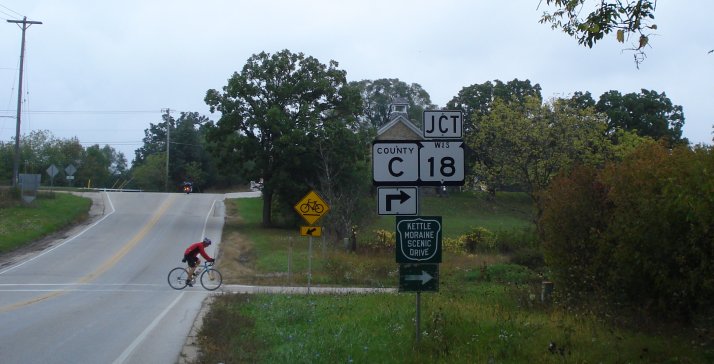
Climate change is not something we face only today. Warmer temperatures helped during the rise of the Roman Empire and cooler ones probably contributed to its downfall. It was warm around the year 1000, when the Viking colonized Greenland and they were later wiped out by the advance of the Greenland ice. Interestingly, archeology in Greenland is now revealing Viking settlement patterns that were buried by ice for hundreds of years. Yes, it was as warm back then as it is now with our warmer temperatures.
North and west of Milwaukee are the kettle-moraines. This is where the last ice age stopped. The ice sheets dithered over the land here making sort of waves in the landscapes. Where glaciers stopped are moraines, long hill waves. An ancient glacial river, where sediment settled, is called an esker. These snake around like raised rivers across the farmlands. Where there was a depression in the glacier and dirt accumulated is called a drumlin. These are now round hills. Finally there are kettles, depressions carved by ice as the glacier retreated. What happened was that shards of ice got stuck in the ground, like glass in tar. When they melted they left holes. Some became lakes or marshes; others are just holes.
Most lakes are the gift of the glaciers, which is why you find so many in Wisconsin and Minnesota and not so many farther south. Over time, all lakes fill in and unless glaciers, man or an earthquake makes a new one, there are no more little lakes. I used to really enjoy the study of this stuff. Natural succession occurs when a lake fills in and gradually, through a succession of plant communities, becomes a forest. This can take thousands of years, which is why the lakes are still here.
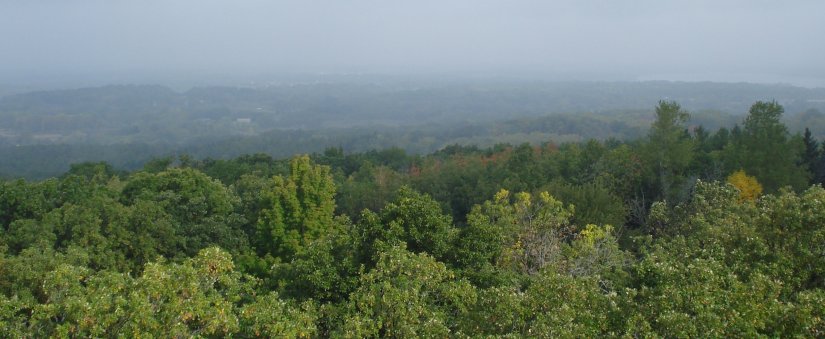
The ice retreated from Wisconsin only about 10,000 years ago and the last ice age is called the Wisconsin glaciation, since there is so much evidence of it in Wisconsin. Besides the kettle-moraines, the area around Lacrosse, where Chrissy is from, is called the driftless area because the glaciers did not cover it and leave glacial dirt, also called “drift.” It was like a hole in the ice, but it was much affected by the glaciers. As the glaciers melted, water raced down forming long narrow valleys called coolies. Grand Coolie in Washington State is a really big example of the phenomenon. It was formed when a giant ice dam broke and washed away pretty much everything in its path. The area of Western Wisconsin is clearly different from the East. Rolling hill give way to a more ragged landscape.
I road my bike from Lacrosse to Milwaukee a couple of times and felt the geography. It is hard going, up and down, until you get past Reedsburg. Then you go down a long hill, which I understand is the Baraboo Ridge, and the peddling gets easier. There are hills, but they are not quite as steep or abrupt.
Anyway, talk about climate change! 10,000 years ago is not really that long in the great scheme of geologic time. The glaciers also created the Great Lakes and are formed the basis for that great fertile soil you find in the Upper Midwest. I suppose you could blame them for the poorer soils farther north, since that is where it was pushed from. All changes produce winners and losers. Climate change is no different. All things considered, we are better off now than during the ice ages.
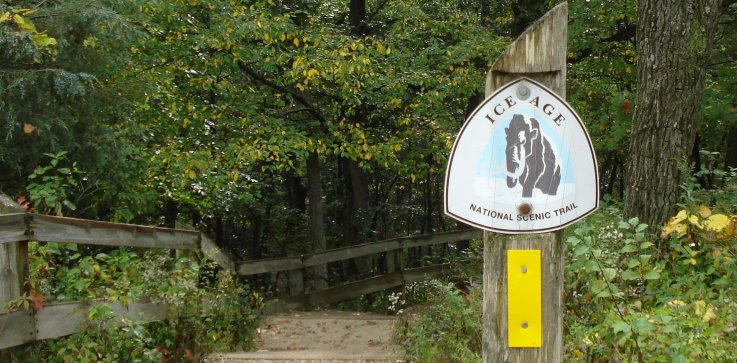
Ice Age Trail
The Ice Age trail follows the edge of the glaciers throughout Wisconsin. I went to the Waukesha part, the Latham district. Latham was a naturalist of the 19th Century. He was instrumental in founding the national weather service.
I feel very at home in the Kettle-Moraines. That was my first contact with natural communities. We went out here on field trips from school and when I could ride my bike far enough I made my own visits. The landscape meshed well with my childhood love of natural history. The soil on the terminal moraines tend to be rocky and gravel and not so good. Ironically, that is one of the reasons we have ice age parks. The soil was not good for farming, so the land reverted to state ownership when the owners just walked away or else sold it cheap.
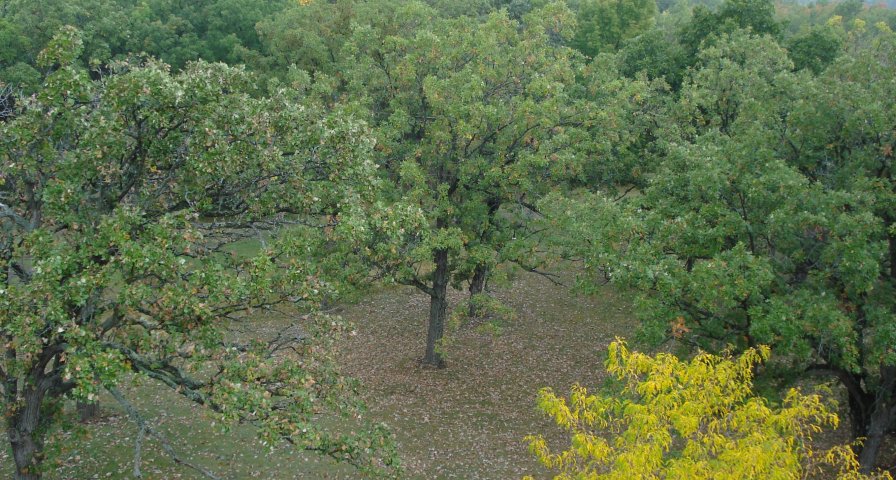
The natural cover in the Waukesha kettle-moraines is oak-savanna, locally called “oak openings.” The trees are spread apart in a park-like setting. The trees do not get very big because of the poverty of the soil, so a century old tree might be only thirty feet high, but they get very picturesque. Until settlement, the oak savanna was maintained by fires, set naturally by lighting or more often set deliberately or accidentally by Native Americans. I wrote about that in a series of posts about fire in the woods. Indians burned the land to improve hunting and once a fire started it could burn for a long time. Since there were no roads and few clearings to stop it, a fire burned until the next heavy rain. For a long time after the European settlement, we excluded fire from the landscape and a lot of brush has grown up. According to signs I saw along the trails, the State of Wisconsin is trying to reestablish the “natural” or at least the pre-settlement ecosystems. This means the judicial use of ecological fire.
I think I should say something about natural succession, since not everybody is as familiar with it. Basically, there is a succession of natural communities that establish themselves on any piece of land. Each natural community creates conditions that allow the next stage to prosper while, ironically, creating conditions where its own continuation is disadvantaged. For example, pine trees fill in a field, but as they grow together they create shade where young pines cannot grow, but the sheltered forest and the improving soil is a good environment for maples, which come to replace pines.
If you start with bare dirt, the first things that come in are weeds, then perennial grass and so on. In a reasonably fertile piece of dirt in Eastern Wisconsin, you will get the weeds, perennial plants, box elders and ash and finally maples-beech-basswood if there is sufficient moisture and soil depth, otherwise oak-hickory. But in some places you won’t really get forest at all. Wisconsin has a lot of prairie ecosystems. Of course, we really don’t know what the “natural” succession would be because no human has ever studied one. The Native Americans burned too, as above.
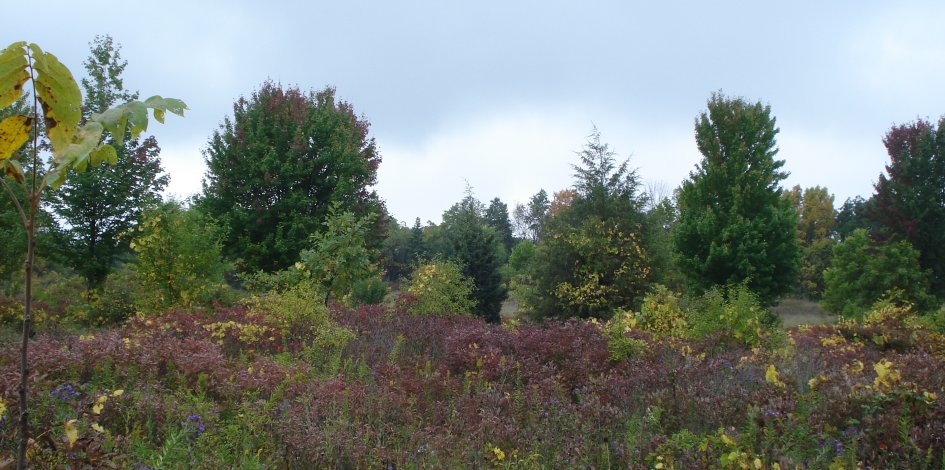
You can see above a field that might be in the process of becoming an open forest. When I studied natural succession, we talked about climax forests. That was the ecosystem that supposedly was the ultimate goal. Once established, the climax forest would remain until disturbed by nature or man. This implied permanence unjustified by the evidence. We now have a more subtle understanding of ecology. There really is no “goal”. Everything is just becoming something else.
